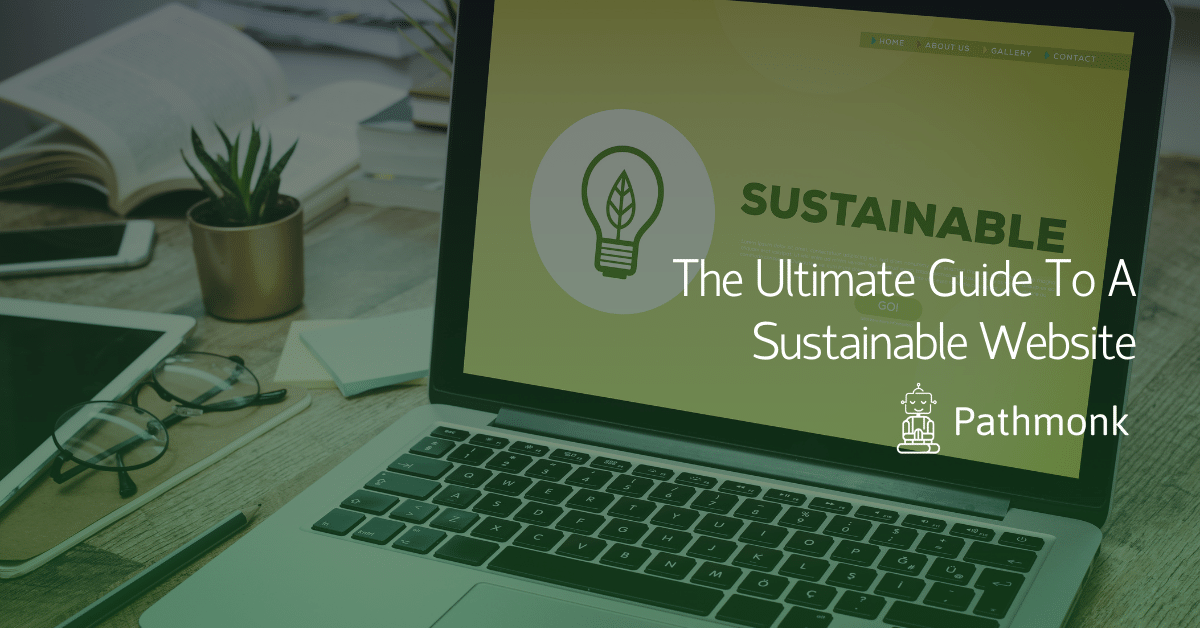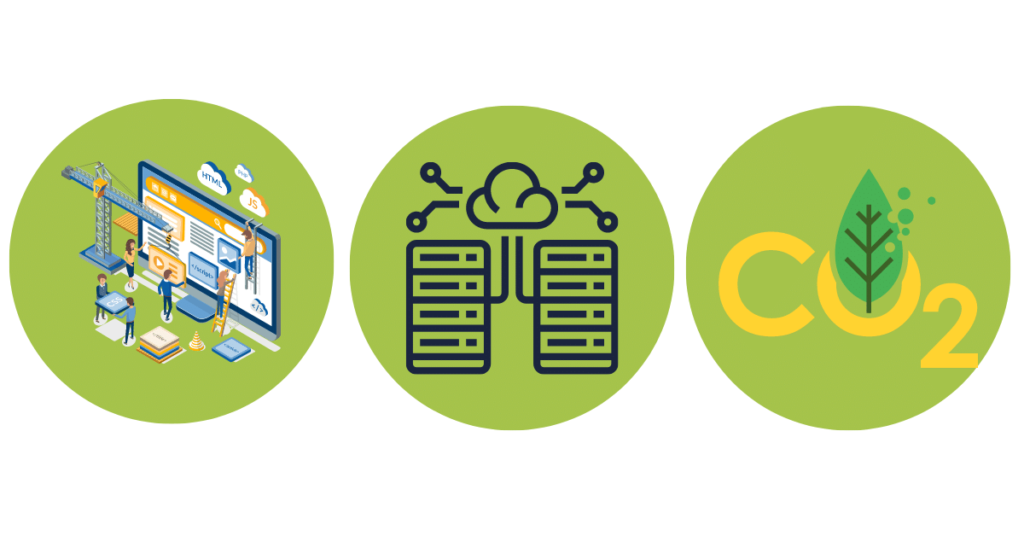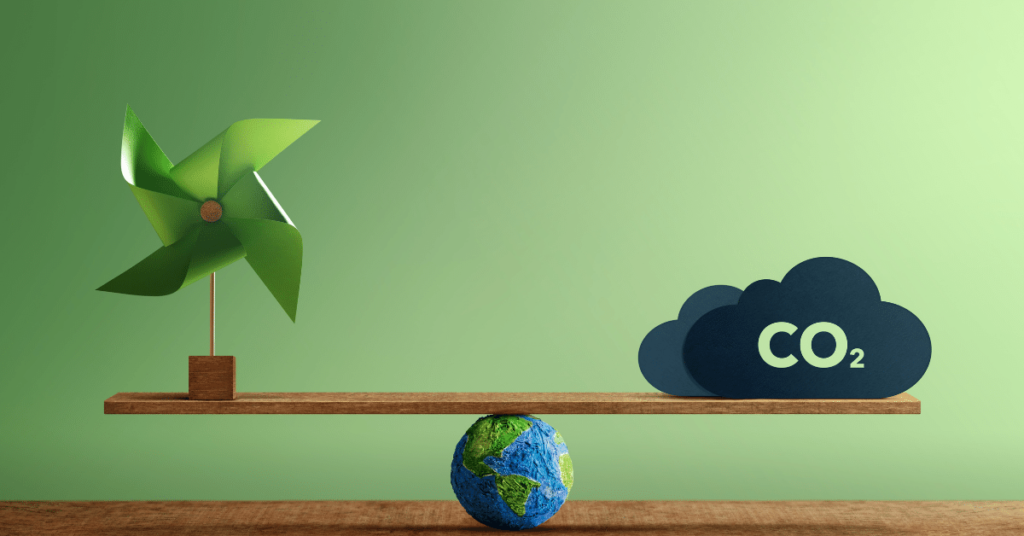
We’re all feeling the pressures of climate change. We can individually take steps, but collectively we can do so much more. As much of the CO2 emissions causing climate change come from business-driven economic activity, bringing initiatives to our workplaces can ultimately create more impact. By building a sustainable website you can create a web that is good for people and the planet.
Why Should You Care About The Environmental Impact of The Web
When we think about the causes of climate change, we think of the burning of fossil fuels, deforestation, livestock farming, and aviation. So how could a website, this virtual and immaterial concept, be contributing to climate change? Unfortunately, the internet isn’t as clean as we’d hope, with 2 billion websites and 4.5 billion internet users it is one of the largest carbon emitters.
Although websites aren’t the only contributor to the internet, they are becoming a major threat, as internet use grows and web designs become more energy hungry. With 252,000 new websites being created every day the demand for data centers is increasing.
Electricity is the lifeline of these data centers and when we consider what it takes to complete a simple website visit; from the energy required on the end user’s device, the communication networks, the data centers where a website is hosted, and the storage of the data, we can see that the resources that are needed to accomplish this, quickly start to add up. So the more data we use on our websites, the more storage we need, and the more energy we burn. Data centers account for 3% of the global electricity supply and consume more power than the entire UK.
Automatically Make Your Website Carbon Neutral
Pathmonk Climate automatically offsets your emissions through high-quality climate projects, while analyzing and calculating your website’s carbon footprint. Showcase your climate actions with your zero-emission website certificate.

What Is A Sustainable Website
A sustainable website is a website that has optimized its processes in order to reduce global carbon emissions. Those processes include sustainable web design, sustainable web development, sustainable SEO, green hosting, and more. A sustainable website is ‘clean, efficient, open, honest, regenerative, and resilient.’
How to Build a Sustainable Website
In order to reduce our websites’ carbon footprints and the environmental impact of the web, we have gathered these key steps, processes, and tips for you to start your journey to a sustainable website.

Hosting
1. Switch To An Eco-Friendly Hosting Provider
Green hosting providers are working hard to find their audience, as the environmental impact of the web demands more attention. Taking this simple step could be one the largest contributors to building your sustainable website. According to a study by the ACEEE, internet activities have real, measurable energy consequences as they highlight that energy used by the internet accounts for 48% of a data center. By simply choosing the right hosting provider, a website owner can have some control over the energy used by that data center.
A website hosting provider has a vast network of servers that house and store website data. It is common for these hosting providers to use standard grid electricity without any knowledge of the source of their power. However, there are a growing number of hosting providers that actively purchase and use 100% renewable energy to power these data centers. As a result, they have lower carbon emissions and are far more environmentally friendly than other hosting providers.
2. Location, Location, Location
You’ll want to choose a hosting provider whose data center is close to your users. The further the information has to travel the more energy is used. Avoid an Australian-based hosting company if your audience is in the UK. By being practical about location and the use of energy that it may require, you will, in turn, reduce your page load times, giving your users a better online experience.
You can consult the Green Web Foundation and their useful database to find providers that use green energy or are carbon neutral.
Reduce Data Transfer
Data transfer refers to the collection, replication, and transmission of large datasets from one unit to another. Data transfers are directly related to energy consumption and ultimately carbon emissions. The more data your website fires back and forth, the greater the energy consumption, and the more CO2 emissions. Therefore, the key to reducing your carbon emissions is reducing data transfer.
Reducing data transfer can be done by reducing the weight of your website. In our mission to improve online buying journeys, we advocate for website weight reduction. Page weight can reduce page load time, ultimately improving user experience and SEO.
Always question the necessity and need of any aspect of your website. In the same way, you ask yourself if you need that 10th piece of chocolate; do you need that customized font or will the words still have the same impact? Everyone’s always on the hunt for quick weight loss programs, whether to slim their waistline or website. Here are some of the best sustainable website practices.

3. Sustainable Website Design
Simplicity is key. Fancy animations, automatic videos, and customized fonts aren’t doing the selling of your products and services. They look good, sure, but the words you use and the buying journey you create are what convert users.
- Reduce image size and use modern formats like WebP or CSS effects when possible
- Avoid overly-vibrant images. Use darker images that require less energy
- Compress images. You can use tools like Colorcinch‘s intuitive, one-click approach to image compression. Their always dependable and fabulously low-maintenance photo enhancement and editing can give you an edge, without adding to your website’s waistline.
- Avoid autoplay on videos. Let the user choose to play videos if they are interested.
- Minimize the use of custom fonts
4. Sustainable Website Development
In our mission to reduce energy consumption, we can look behind the curtains of our website’s makeup. With the influence developers have in the creation of a website they can
Write code cleanly and efficiently. Avoiding duplicates
Build static web pages
Reduce, split and bundle JavaScript assets
Use Lightweight CSS libraries
Lazy-load images
Use different image sizes for different devices
Employ a caching solution
Use accelerated mobile pages (AMP)
Use modern web fonts like WOFF and WOFF2
5. Sustainable SEO
This may be a practice you didn’t expect to leverage in your efforts to build a sustainable website, however investing in sustainable SEO can easily optimize for lower carbon websites. Improving your SEO efforts, heightening the user experience, and optimizing buying journeys will ensure that you prioritize your website visitors over large amounts of traffic.
With sustainable SEO you’re empowering the users to find what they need in fewer clicks. This means you’re providing better value for your readers and your website will be more energy-efficient.
- Remove pages, articles, and any content with low value
- Improve existing content instead of writing new articles
- Enhance your site architecture
- Optimize buying journeys to get users to convert quicker
- Satisfy user intent as soon as possible
6. Offsetting Carbon Emissions
Above are real actions we can take to create a more energy-efficient web. With one sustainable website at a time, we can collectively make a difference and eliminate the waste of energy within the web industry.
However, in our efforts to reduce our website’s carbon footprint our websites will still emit CO2 into the atmosphere. Additionally, we don’t have full control over the entire network. Therefore we can’t create a truly carbon-neutral website, yet. In order to eliminate the impact of your website on the environment, we need to offset our website’s carbon emissions.
Pathmonk Climate automatically offsets your emissions through high-quality climate projects, while analyzing your website’s carbon footprint. By offsetting your emissions through our climate projects you can get certified; showcasing your actions against climate change and ultimately encouraging others to do the same.

Your Sustainable Website
A more sustainable website equals a better-performing website. As you optimize buying journeys, reduce page load times, and improve and prioritize content, you create a better user experience while creating a better planet.
Automatically Make Your Website Carbon Neutral
Pathmonk Climate automatically offsets your emissions through high-quality climate projects, while analyzing and calculating your website’s carbon footprint. Showcase your climate actions with your zero-emission website certificate.









